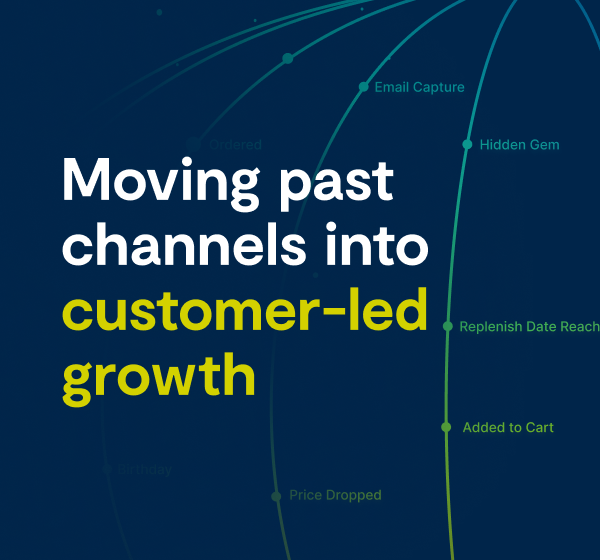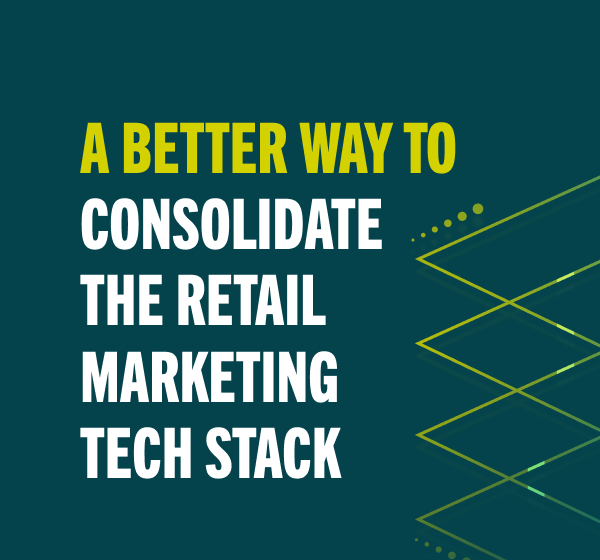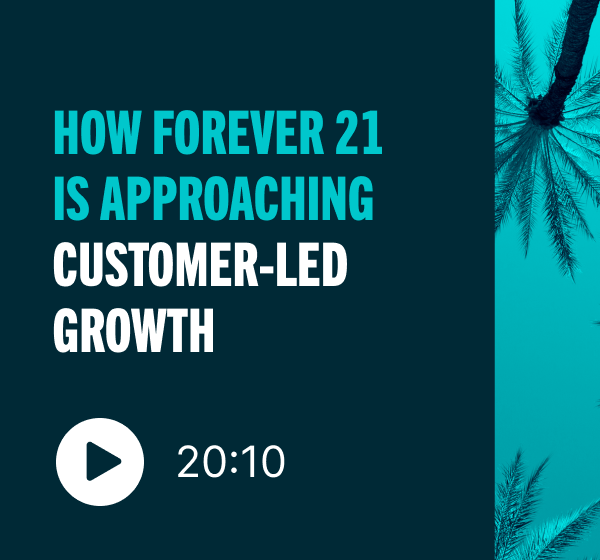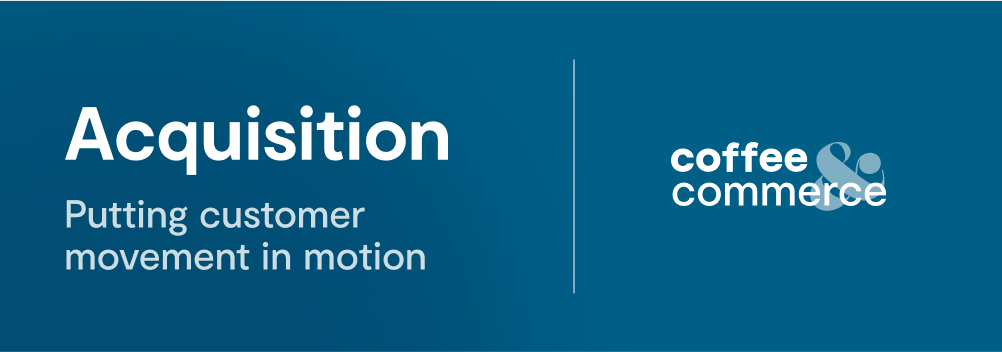
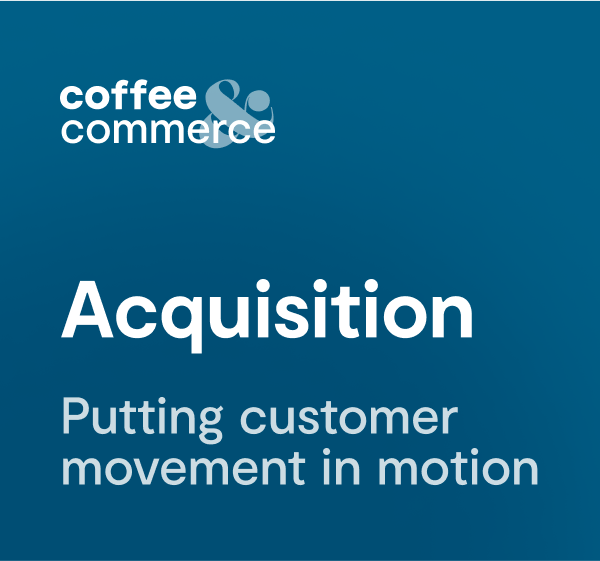
Customer Acquisition: Putting Customer Movement in Motion
Between rising customer acquisition costs and the gradual depreciation of third-party cookies, retailers are struggling to break through the noise. Some have tried to brute-force their way out of the problem, usually by bombarding shoppers with emails and texts. But while tactics like these might provide a short-term revenue bump, they’re far from a sustainable strategy — and more likely to alienate shoppers in the long run.
Accordingly, the question retailers are asking is, how can we acquire customers without draining our budgets?
Our most recent Coffee & Commerce was all about finding a way out of this impasse, helping them leverage acquisition strategies that drive both short-term revenue and long-term customer value.
The concept of customer movement is central to this process.
Customer movement is a marketing philosophy and framework that is centered on customers rather than channels. It’s the practice of moving your customers through the sales funnel — from unknown shopper to known customer to first-time purchaser and loyalist — and re-engaging those who threaten to slip through the cracks. Simply by deciding to refocus strategy around the customer, retailers can increase reach, relevance, purchase frequency, and — most importantly — revenue.
Below, find tips for the three main focus areas for customer acquisition, all of them geared toward converting those newly acquired customers to repeat buyers.
Increasing identification rates to increase customer acquisition
“Identification is the engine that powers customer movement,” said Sarah Cascone, VP of Marketing at Bluecore. “Simply put, you can’t move a customer through the lifecycle without first knowing who they are and how to communicate with them.”
In practical terms, your identification rate is the percentage of shoppers on your site recognizable by email or phone number. When you can identify a shopper, you can match them to previously collected behavior, which lets you retarget them to get them to a purchase.
At Bluecore, the first thing we do when working with a new partner is assess their identification rate and draw up actionable steps to increase it. That could mean adding pixels to crucial website locations, bolstering email capture efforts; or increasing onsite engagement with the shopper. Just a few small tweaks can raise a retailer’s identification rate significantly, which has major implications when it comes to moving shoppers through the lifecycle.
It’s important to note that this isn’t a static process. Ideally, identification rates will be reviewed frequently, allowing retailers to continually optimize their strategy. For instance, if you start to notice that a certain paid media channel is particularly useful for identification, you can reallocate your resources accordingly.
Optimizing your paid media spend
Optimizing the use of paid media overall is a crucial tactic for customer acquisition. Without the right strategy in place, you can spend a lot of money and have very little to show for it. But keeping in mind a few key precepts can help you maximize the value of every ad dollar.
Start by suppressing your most active customers. You do not want to waste money “acquiring” people who are already devoted to your brand.
Once you’ve done that, you can dig into your audience file and use predictive and behavioral models to build lookalikes of your best customers. “That could be anything from top predictive lifetime value, to category affinity, to propensity to buy full price,” said Amanda Coffin, Customer Success Leader at Bluecore. “These people are very active on your site, so you can really easily create these profiles and use them to target shoppers in paid media channels.”
From there, the job becomes tracking the performance of your paid media. As Amanda put it, “You want to ensure that those strategies are consistently converting identified shoppers to first-time buyers, and that your trend is moving in the right direction.”
Increasing site engagement
Obviously, identifying your shopper needs to be your first priority. But once you have, what’s the best way to navigate them towards a purchase?
This is where site strategies come into play. It’s important not to treat your audience like a monolith, and to instead strategize based on a given shopper’s individual preferences and behaviors. For instance, if a shopper has already provided you with their email, there’s no need to keep prompting them with email capture forms.
There are countless ways to nudge shoppers toward a purchase when they’re engaging with your site. If a shopper is browsing but seems close to leaving, you can prompt them with some of the products they’ve engaged with while on your site. You can also grab their attention right out of the gate with dynamic product recommendations that showcase your new arrivals and best sellers, and then continue to make new recommendations as you gain a clearer sense of their preferences.
“Dynamic recommendations allow you to maximize your inventory,” said Shweta Patel, Customer Success Manager at Bluecore. “This lets you show customers more products based on what they’ve been browsing.”
Taken together, a strategic focus on these three areas — identification rate, paid media spend, and site strategies — can drive customer acquisition and radically reshape your marketing efforts in a matter of weeks.
We host Coffee & Commerce events monthly. Be sure to sign up for the next one here!



